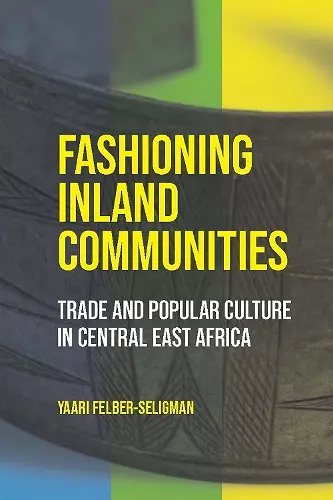Fashioning Inland Communities
Trade and Popular Culture in Central East Africa
Format:Hardback
Publisher:University of Wisconsin Press
Published:3rd Jun '25
Currently unavailable, our supplier has not provided us a restock date

When viewed from the economic centers of the Indian or Atlantic Oceans, the Ruvuma region of East Africa, crossing what is now Tanzania, Malawi, and Mozambique, would look like a periphery. But the same factors that marginalize the region historically brought distinct opportunities. In Fashioning Inland Communities, Yaari Felber-Seligman traces the long history—from the first millennium CE into the twentieth century—of Ruvuma trade practices within a changing world. Felber-Seligman argues that Ruvuma trade should be understood fundamentally as a set of voluntary choices undertaken and revised to further communities’ aspirations.
Ruvuma used fashion to build varied communities, from local to pan-regional, reflecting the dynamic relationships among inland groups. Examples of Ruvuma popular fashions reveal processes of meaning-making and community building that call for us to expand our attention to the ways in which East African peoples interacted alongside, as well as beyond, trade networks that sourced prestige and commercial goods. Popular culture here emerges as a heterarchical force that shaped lasting multidirectional connections across and between Ruvuma and their neighbors. As both a subject and a strategy for analysis, the history of popular fashion shifts how we view histories of small, decentralized societies as they encounter larger economies. Felber-Seligman demonstrates that this has implications for our understanding not only of trade but of material culture, community, gender, and family.
“Felber-Seligman brilliantly places the fashions, desires, and affective ties developed by men and women of the inland Ruvuma River basin region at the center of the centuries-long history of Indian Ocean trade. In Ruvuma residents’ artful hands and with Felber-Seligman’s thoughtful storytelling, foreign objects far exceed the familiar scholarly treatment of material culture from ‘elsewhere’ as prestige goods or regional currencies. Instead, Fashioning Inland Communities ask us to recognize the power of informal ties and fashion whims to transform lives, politics, and even the sorts of intercontinental processes recognized as definitive of global histories.” - Kathryn de Luna, Georgetown University
ISBN: 9780299350406
Dimensions: unknown
Weight: 454g
344 pages